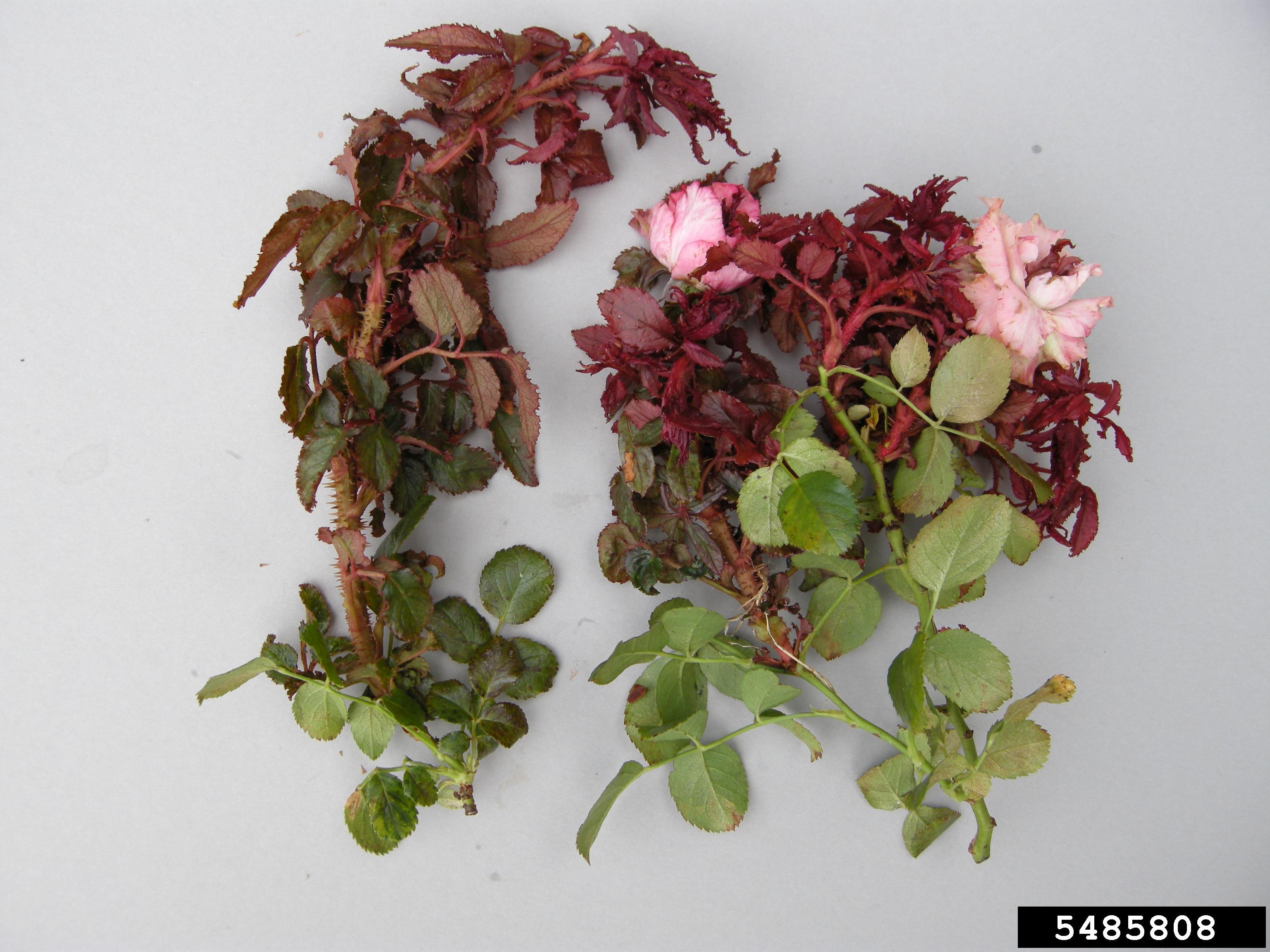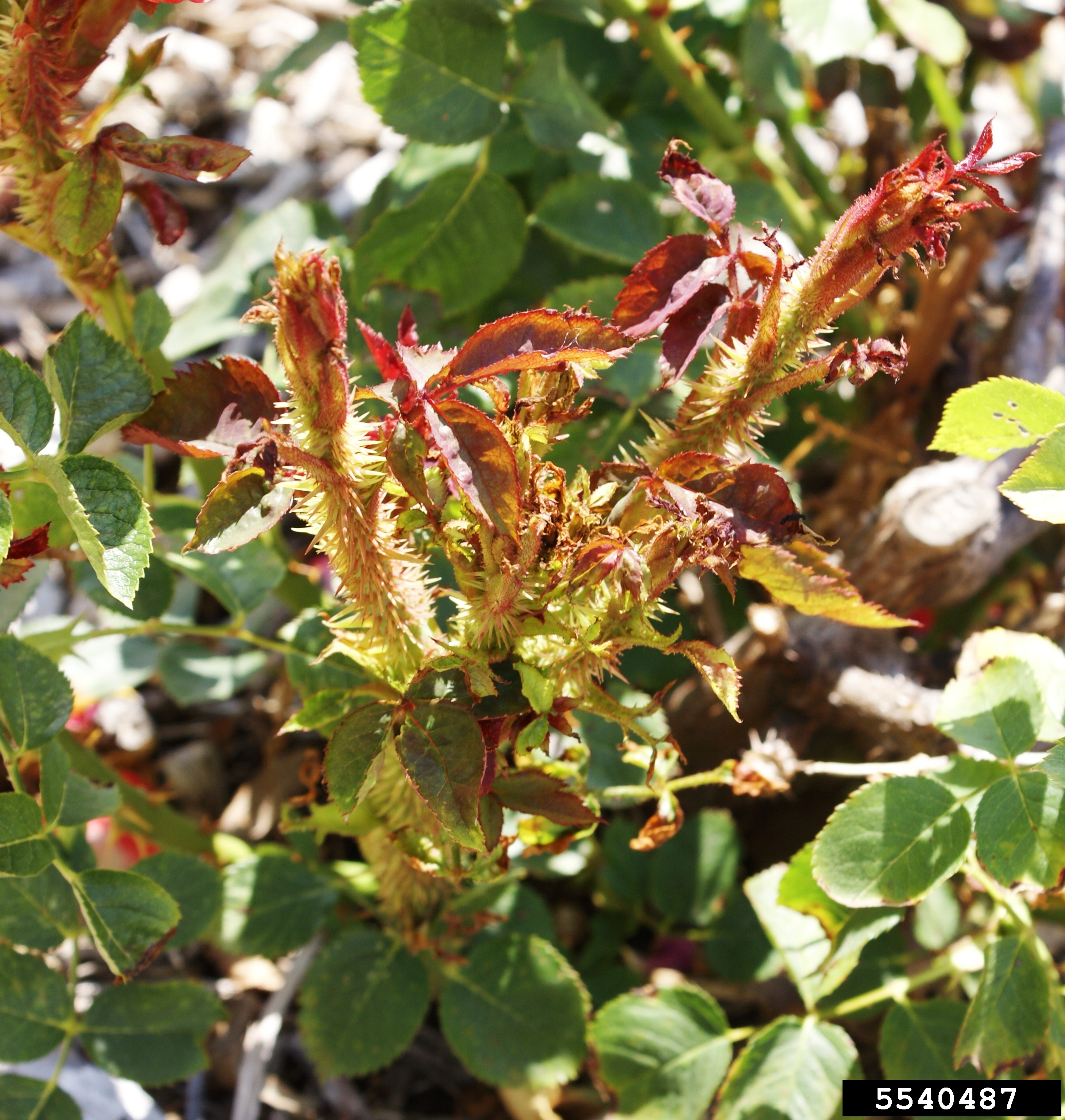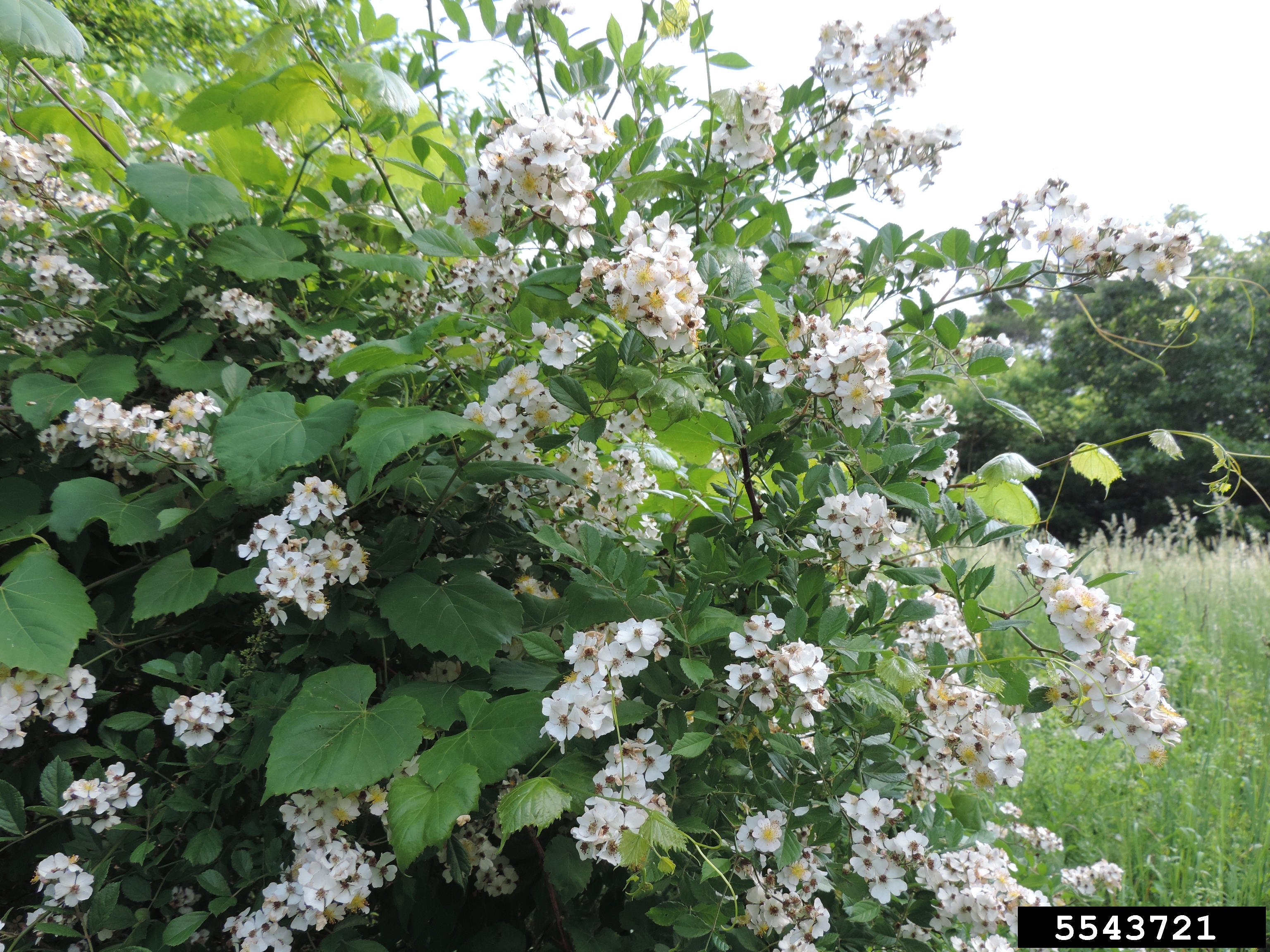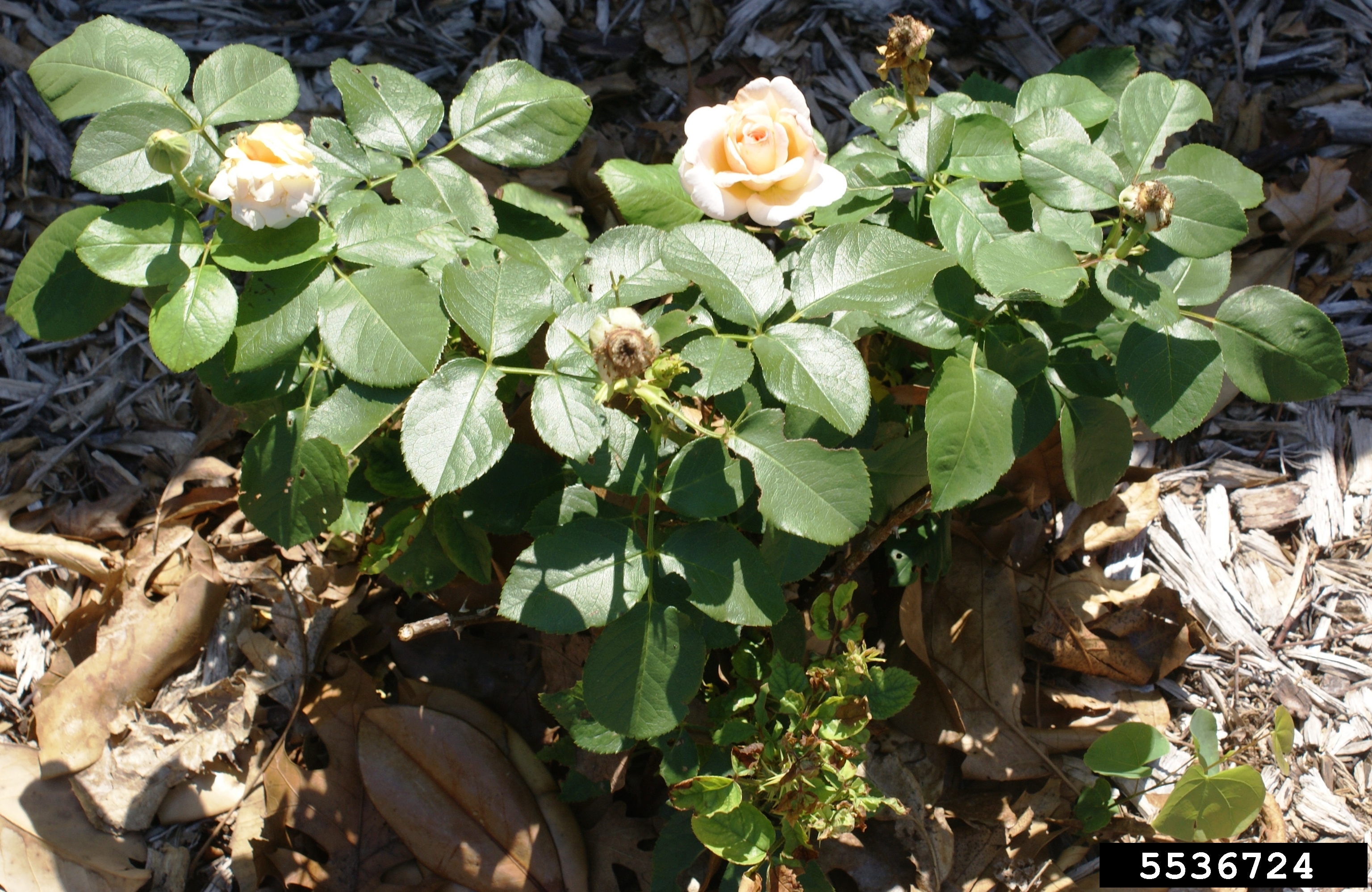Rose rosette disease: A death sentence for roses
How rose rosette disease spreads unseen among roses.

Rose rosette disease was first identified in the early 1940s where it was found on wild roses growing east of the Rocky Mountains. Rose rosette disease is caused by the rose rosette virus, which is spread by the eriophyid mite Phyllocoptes fructiphilus. By the 1960s, rose rosette disease spread across the United States, including Michigan. According to the University of Georgia Extension, “It has been estimated that about 93% of rose plants that are susceptible to this disease have the potential to be killed in a matter of decades.”
The spread of rose rosette disease
The tiny, microscopic eriophyid mites that carry the rose rosette virus are moved by the wind. They are unable to crawl from plant to plant. When they are ready to move, they stand up on their tail end to be carried away by the wind. While developing and feeding, they nestle themselves in the flower buds (Photo 1).
The mite spreads the virus through its mouthparts. According to a Pathogens article, “Field Resistance to Rose Rosette Disease,” after feeding on an infected rose for five days, the mite is capable of transmitting the rose rosette virus, but it takes less than an hour for the mite to transmit the virus to an uninfected rose. Susceptible roses can remain asymptomatic for up to six months. Symptoms of rose rosette disease include witches’ brooms (Photo 2), red or yellow discoloration or distorted buds (Photo 3), excessive thorns (Photo 4), mosaic-patterned leaves, thick stalks, deformed leaves and flowers on roses.


Rose rosette disease affects not only multiflora roses, but also ornamental roses. Multiflora roses (Photo 5) were introduced to the U.S. in the late 1800s to be used for erosion control, fencing barriers, food for wildlife and ornamental rose rootstock. They are a climbing, rambling shrub that can grow more than 15 feet. They usually have white flowers and produce rose hips containing seeds that are dispersed by birds and wildlife. As a result of their aggressive growing habit, they are considered invasive in Michigan and other parts of the U.S. Ornamental roses are cultivated in nurseries and sold commercially in garden centers. They include hybrid tea (Photo 6), grandiflora and shrub roses.


Roses infected with rose rosette disease
Almost all roses are susceptible to the disease. Unfortunately, the only remedy is removing the infected roses to avoid spreading to nearby roses. Remove all parts of the rose, including the roots, and bag and dispose of them in the trash, not the compost pile. Even though the mite that spreads the virus doesn’t live in the soil, it can overwinter on the roots and root fragments. Chemical control methods are ineffective because the mite is small and hidden in the flower buds that makes for limited contact with horticultural oils or miticides.
Protecting roses
The good news is that the mite that carries the virus is specific to roses, which means the virus won’t spread to plants other than roses. Removing infected roses provides the opportunity to plant a variety of different plants in between roses to provide a barrier of protection.
Monitor roses for signs of decline. The distorted growth, such as witches’ broom, yellowing or stunted leaves are also symptoms of herbicide damage, which can be confused with rose rosette disease. Inspect nearby plants for similar herbicide damage to help determine which is the culprit. In addition, some rose cultivars normally have new growth, which is red. Over time, this red growth will turn into normal green growth.
Practicing good sanitation practices in the garden is essential. Clean tools between plants when pruning, remove fallen or dead plant debris from the ground around the roses, dead head frequently and dispose of pruned plant debris immediately. Before purchasing new roses, always buy healthy looking shrubs and inspect them carefully for any signs of disease.
New research is being done to develop sustainable rose cultivars that are resistant to rose rosette disease. More information about sustainable roses can be found on the Sustainable Roses website, a collaborative research effort with the goal of developing roses resistant to rose rosette disease. In addition, cases of rose rosette disease can be reported on the Sustainable Roses website via the reporting form.
Thank you to David Lowenstein from Michigan State University Extension for his review of this article.



 Print
Print Email
Email